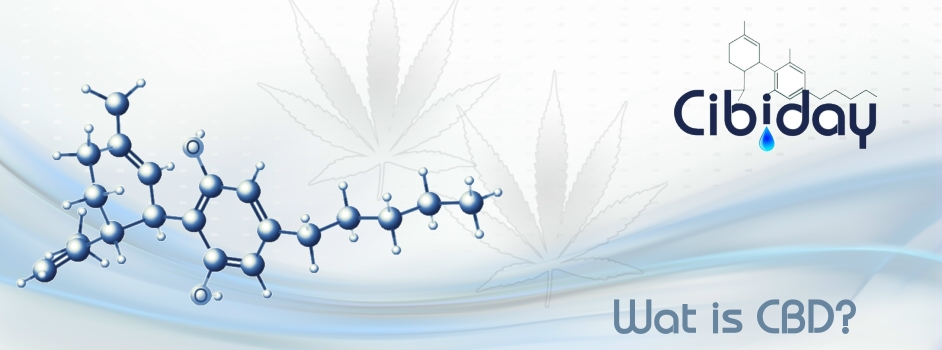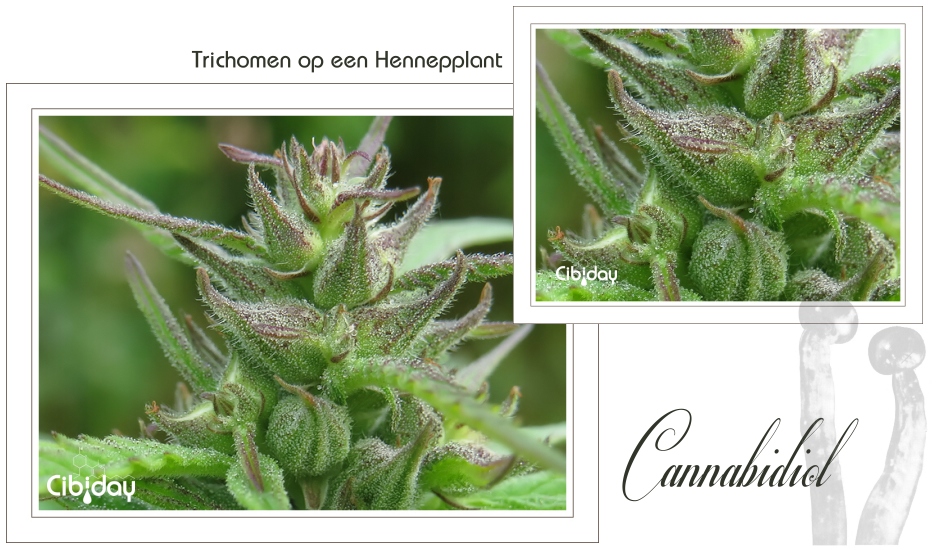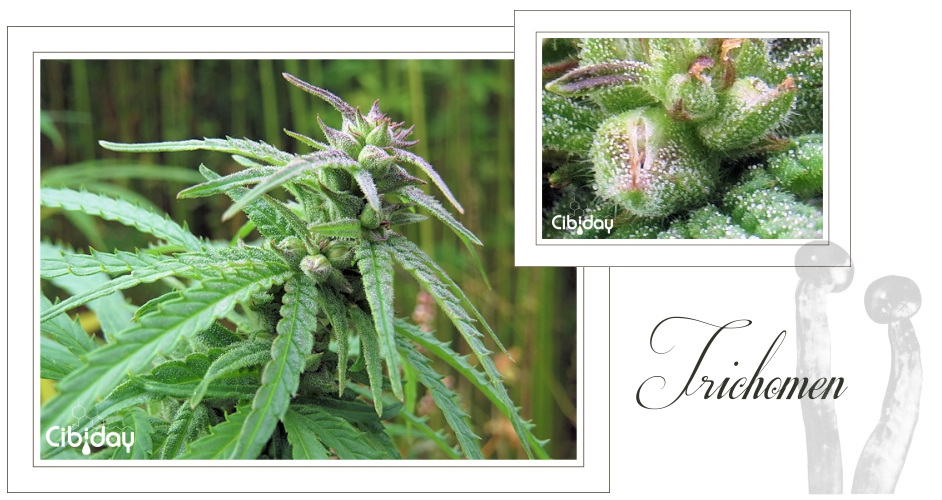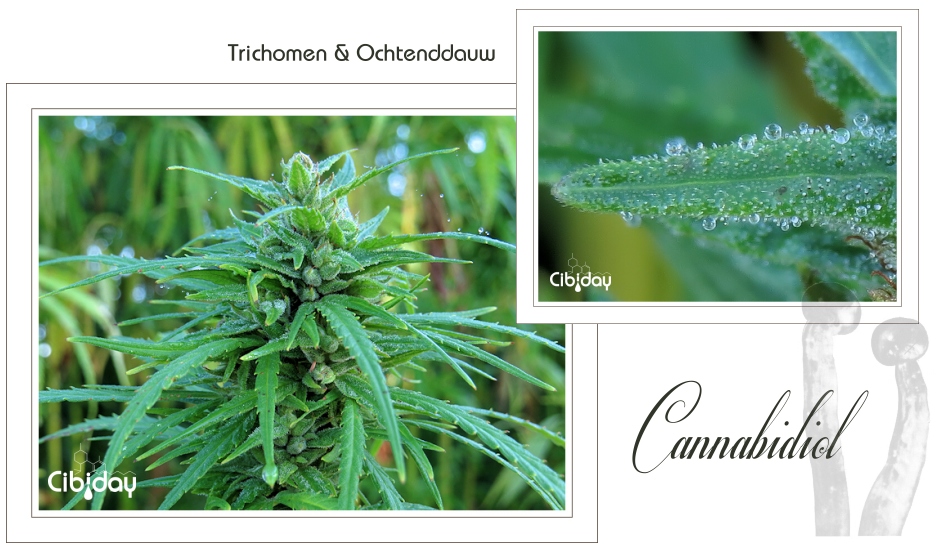
What is CBD? - Elaborate and clear explanation about CBD (Cannabidiol)
CBD is the abbreviation of cannabidiol and is, just like THC (tetrahydrocannabinol), an extremely important ingredient which can be found in cannabis (in both hemp plants as well as in weed
plants).
This component, which belongs to the so-called cannabinoids, possesses an extensive array of beneficial properties for both humans and animals.
CBD however does not cause the user to experience any stoned or high sensation. The cannabinoid THC is wholly responsible for that. The fact that cannabidiol cannot cause any psychoactive effect is of great advantage to many people. All daily activities can be carried out without problems.
Despite the fact cannabidiol is completely unknown to many, it is not a recently discovered substance. As it happens CBD was already isolated from cannabis in the year 1940. More than 20 years later, in 1963, the Israeli organic chemist and professor Raphael Mechoulam, together with his colleague Yuval Shvo, managed to correctly map the structural formula of cannabidiol. It has only become apparant in the last few years however that CBD has many beneficial applications, which has meant that CBD oil has risen to unrivaled popularity in a short time.
CBD is an active cannabinoid in cannabis Besides CBD and THC, there are at least a 100 other active cannabinoids to be found in cannabis plants. All these plant cannabinoids are called phytocannabinoids, derived from the Greek phyton, which means plant. The thing which is unique about phytocannabinoids, is that they possess the same properties as certain chemicals which can be found naturally in our bodies, the so-called endocannabinoids. Substances like the well-known THC and CBD, which is becoming ever more popular, mimic these endogenous substances.
Because these plant (phytogenetic) cannabinoids are copies of our body's own (endogenous) cannabinoids as it were, they fit like keys to specific receptors (cell recipients) in our body, which normally only endogenous substances can bind to. This means they can therefore influence certain biological processes or functions in our body just like endocannabinoids.
Cannabidiol is a phytocannabinoid which is seen as an endogenous substance
This means our body does not consider these phytocannabinoids as unfamiliar intruders and does not get ready to switch on a defense mechanism. This has as an advantage that the body can take up CBD in a quick and right manner and that internal processes can be rapidly influenced or directed. A negative effect from the body's defenses and the production of antibodies does not occur.
This internal system of cannabinoids and cannabinoid receptors is called the endocannabinoid systeem. Since the discovery of the endocannabinoid system (ECS) people have been focussing ever more on the properties of cannabidiol and other, lesser known cannabinoids, instead of only doing extensive research into the properties of THC, as was previously always the case.
How does cannabidiol function in our body?
Our body is a complicated biological machine in which all kinds of chemical processes are continually taking place. In order to understand the effect of the phytocannabinoid CBD on our body, we would like to refer you to the extensive explanation on the information page: How does CBD function
How is CBD created?
CBD is produced in the trichomes (resin glands) of the cannabis plant, just like the other phytocannabinoids. This is done by means of biosynthesis through two different paths in the plant. In doing so enzymes catalyze a series of chemical reactions in which complex molecules are formed from simple, smaller molecules.
The precursors of all natural cannabinoids are geranyl pyrophosphate and olivetolic acid. These two precursors are produced through a complex series of biosynthetic reactions. With the help of an enzyme called GOT (geranyl pyrophosphate:olivetolic acid geranyltransferase), they are bound together which creates the first cannabinoid, known as cannabigerolic acid (CBGA).
CBDA synthase
CBGA is thereafter converted into cannabidiolic acid (CBDA) by the enzyme CBDA synthase. This cannabinoid, just like CBGA, possesses a carboxylic acid group with the molecular formula COOH. Due to the presence of this acid group the word acid or the letter A is added to the end of the name or the abbreviation.
The presence and the relative proportions of the specific enzymes determine which cannabinoid will be the main ingredient of each cannabis strain. When there are more THCA synthase enzymes present, the plant will contain more THC in the end. Heat will spontaneously break off the carboxylic acid groups of the cannabinoid structures (decarboxylation). This occurs in the form of CO2 gas. CBD is formed by the breaking down of the A-group.
What is CBDA?
Cannabidiolic acid, abbreviated as CBDA, is described as the acidic form of cannabidiol and is converted into the neutral CBD after drying or heating of the plant material. So fresh cannabis plants do not contain any to only minimal concentrations of CBD which prompts many extracts to be heated during the manufacturing process.
Because ever more beneficial properties of CBDA are being discovered, the fresh plant material is processed as quickly as possible these days and heating is omitted in many products in order to keep the obtained extract as pure as possible. CBDA was the first ever cannabolic acid to be isolated from cannabis in the year 1955. An extensive explanation about the cannabidiolic acid form can be found on the info page: (CBDA).
Cannabinoids of the CBD-type
Besides CBDA, there are more cannabinoids which belong to the CBD-type. The phytocannabinoids belonging to the CBD-type discovered so far are:
• Cannabidiolic acid (CBDA)
• Cannabidiol (CBD)
• Cannabidiol monomethyl ether (CBDM)
• Cannabidiol-C4 (CBD-C4)
• Cannabidivarinic acid (CBDVA)
• Cannabidivarin (CBDV)
• Cannabidiorcol (CBD-C1)
• Cannabimovone
Cannabidiol from hemp or weed? Although both hemp and weed belong to the same cannabis genus, there is still a distinction to be made between the two plants. Despite the differences the ingredient cannabidiol can be obtained from both hemp plants as well as from weed plants, the molecule in both species of cannabis happens to be identical.
The presence of different terpene profiles can produce different effects however. This terpene profile not only differs in hemp- and weed plants, but also in each separate hemp- or weed strain. Even so CBD is mainly obtained from hemp. There are two reasons for this: the CBD-percentage and the legality. Because weed plants were mainly cultivated for recreational purposes in the past, ever more strains with high THC-percentages were created, which meant the CBD-percentage became ever more lower until it was almost nil.
Hemp plants on the other hand have already been legally cultivated for many years for industrial purposes, which meant the THC level was never of importance. It was even undesirable, because plants with a percentage of more than 0.2% THC are not allowed by the European Commision and can therefore not be legally cultivated. Because of this most hemp strains are rich in cannabidiol.
Due to growers now becoming aware of the importance of cannabidiol, nowadays there are ever more new weed strains with both high THC-percentages as well as high CBD-percentages. Examples of these strains are for instance CBD Kush, Blue Shark, ComPassion or Medi Haze.
Positive characteristics of CBD
Cannabidiol possesses a large number of positive characteristics. The lack of psychoactivity (in the sense that no euphoric or mind-altering effect occurs) on top of that makes it suitable for application with animals, children or the elderly and with those that would rather not get high. Below follow some favourable characteristics:
|
|
What does CBD consist of?
The cannabidiol-molecule is made up of 53 atoms (21 carbon atoms, 30 hydrogen atoms and two oxygen atoms), which are connected to each other by 54 atomic bonds. These atomic bonds consist of 24 non-hydrogen bonds, 8 multiple bonds, 6 rotatable bonds, 2 double bonds, 6 aromatic bonds, 2 six-membered rings and 2 aromatic hydroxyls.
General information
Furthermore there are a number of key features to note about cannabidiol, which could for instance be of importance in the manufacture or processing of CBD-products. The chemical data and
physical values are as follows:
Chemical data
• The chemical formula for cannabidiol is C21H30O2 (21 carbon atoms, 30 hydrogen atoms and 2 oxygen atoms)
• The molar mass is 314.47 g/mol (mass per unit)
• The systematic name is 2-[(1R,6R)-6-Isopropenyl-3-methylcyclohex-2-en-1-yl]-5-pentylbenzene-1,3-diol
Physical values
• Melting point: 66°C / 151°F
• Boiling point: 180°C / 356°F (range: 160 - 180°C or 320 - 356°F)
• Poorly soluble in water (polar)
• Easily soluble in butane, propane, CO2, olive oil (nonpolar)
• Well soluble in alcohol and isopropyl alcohol (partially polar)
Explanation about the solubility of cannabidiol
Cannabidiol is hydrophobic ('water fearing') and lipophilic ('fat loving'), just like the phytocannabinoid THC. This means that this ingredient from cannabis is nonpolar and it is not easily soluble in polar solvents like water, but it is in nonpolar solvents like oils, fats, butane, propane, hexane and the like. Polar substances are molecules which can easily form hydrogen bonds (hydrophilic) while nonpolar substances cannot do this. They happen to lack an OH- or NH-group or they do have a group, but are for the most part nonpolar (in large molecules like cannabidiol). So these nonpolar substances are hydrophobic.
Despite the fact cannabidiol is better soluble in nonpolar solvents, it can however also be soluble in polar substances like ethanol (alcohol) and isopropyl alcohol (isopropanol). The reason a nonpolar substance like cannabidiol does not dissolve in a polar substance like water, but it does in a polar substance like alcohol, is due to various chemical factors.
From which atoms a molecule is made up, the size of the molecule, the HLB value, the dipole moment, the electric charge, Van der Waals forces and the relative permittivity (εr ) can for instance be factors which effect the polarity. The permittivity indicates how easily a substance can achieve polarisation through the creation of an electric field.
As you can clearly see in the summary below, the nonpolar solvents have a very low permittivity, while water has a very high one. Both isopropyl alcohol as well as ethanol are in between, but tend more towards a low εr like nonpolar substances as water for instance. So isopropyl alcohol and ethanol are only partially polar.
• Butane: 1.4
• Propane: 1.6
• Hexane: 2.0
• CO2: 1.6
• Olive oil: 3.1
• Linseed oil: 3.2 – 3.5
• Isopropyl alcohol: 18.3
• Ethanol: 24.3
• Water: 88.0





